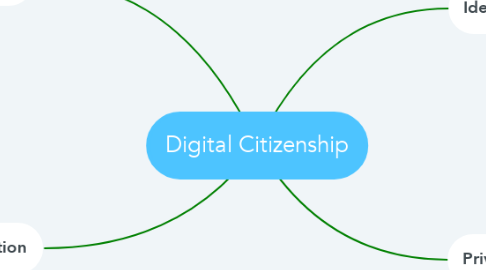Digital Citizenship
by Chase Coli

1. Identity
1.1. Self Image: Promoting strong self-image in students is a matter of creating a positive and supportive classroom environment. Respect for self and other is key here.
1.2. Presentation of Self: Make it clear that the dress code and the existing rules about language and communication apply online as well; Scaffold and model this behaviour as a lifelong skill for students
2. Privacy & Consent
2.1. Privacy Settings: Alongside teaching students how to responsibly filter their own behaviours online, they should also know how to interface with software in order to control who can see what.
2.2. Consent: Responsible use of other people's words, ideas, or image is important. Students should understand that people should ask for permission before posting a representation of somebody else.
3. Ownership
3.1. Plagiarism: Along with consent, students should understand that the works of individuals are the copyright of those individuals. Students themselves hold copyright, and they should know how to respect others' copyrights, while also protecting their own.
3.2. Online Goods: Students should understand how online purchases work, and how the sale of software on online stores differentiates from purchasing physical goods.
4. Community & Participation
4.1. Positive participation: Students need to understand that online communities are environments just like the classroom, and that good behaviours are a community effort. Online rules, terms of service, and moderation are all strong examples of this.
4.2. Echo Chambers: Students need to understand how websites sort and prioritise information and content based on past behaviours, and how this can create insular and close-minded spaces online.


